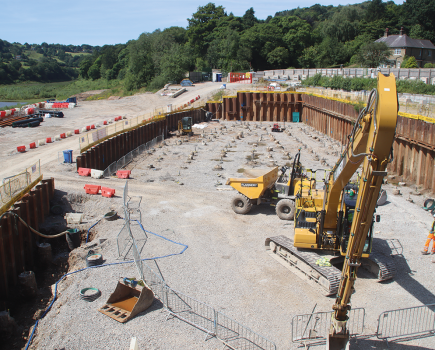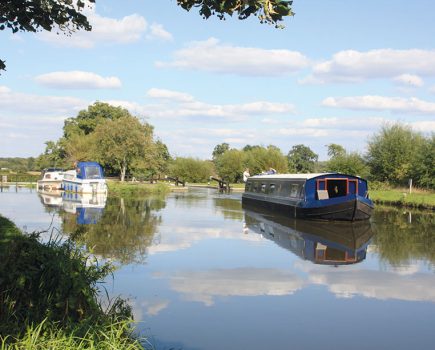Winter is coming… so it’s time to do a few checks on your boat’s heating and think about ways to keep things warm

Is it safe to start?
First things first, check the exhaust – is it still in one piece? Flexible exhaust systems can get brittle over time and, if knocked during summer cruising or maintenance, can leak, which isn’t a healthy experience. Make sure too, especially if the boat is new to you, that no one has fitted a vehicle exhaust silencer as they aren’t gas tight or insulated, and should definitely not be fitted in a boat. Check the heater’s fuel system for leaks or corrosion and ensure the combustion air pipe hasn’t been crushed.
Coolant
Just like a car, the coolant isn’t just there to stop things freezing up. If you neglect the antifreeze, the corrosion inhibitors begin to degrade or get used up. If this happens, the radiators rust internally and the entire system starts to sludge-up. As the rust content builds it can create electrolysis in the heater, causing it to eat itself from within. Antifreeze lubricates the water pump in some heaters and will stop limescale build-up around critical parts.
If you are using a long-life coolant, the heating system should be drained down, flushed out and fresh antifreeze water/mix added every five or six years (two to three years for standard antifreeze). Add one or two years if you use de-ionized water. Eberspächer recommend a 50/50 mix of any standard Glycol based vehicle antifreeze and water, but never use more than a 50/50 mix or household inhibitors.

Here’s a tip: never add neat antifreeze into a single pipe header tank. It will just sit there in the tank fooling you into thinking your coolant system looks great.
Fuel
If your boat has had little use over the summer, think about fuel quality. Is it old? Is there any sign of diesel bug? Heading into a harsh winter with a tank full of summer diesel can be a basic error. Fuel suppliers should switch from summer diesel to winter diesel during September.
Summer diesel should start ‘waxing’ from -5°C, but depending on FAME content, water, age etc. this number can deteriorate. So, as you get to the point when you really need your heater, it may fail due to fuel starvation caused by waxing. By the time the engineer turns up, the temperature has risen so the heater starts first time.

Start the heater
If the heater hasn’t been started for a few months, it might not want to start first time. This is not generally the heater’s fault, it’s normally caused by dead fuel in the copper fuel line. Copper degrades diesel at an alarming rate and when copper fuel line is used, it generally has an extremely small bore size (usually 2mm internal diameter) for most heaters.
This equates to a minute amount of diesel completely surrounded by copper, so within a few months, the copper will have oxidised and degraded the diesel to the point it will no longer ignite without compression. After two or three start attempts, the heater will have pulled the fresh diesel from the tank and you’ll be greeted by a brief cloud of smoke as the un-burned old diesel is burnt off. This is a good time to check for exhaust leaks.
As soon as the heater starts, check the fuel system again for leaks.
Listen to you heater

Once the heater has cleared any old diesel from its fuel lines, it should start cleanly without excessive smoke. The sound emanating from the exhaust should be clear, crisp and even, a steady roar or, if you have a fully silenced marine exhaust, a whisper.
With the boards up, listen to the intake noise. This should be a steady whine – if no combustion air pipe has been fitted the whine will be quite loud. If you hear the whine changing erratically, it can be a good indication that the blower motor will not last till spring. If your heater goes out when trying to start from cold, puffing a big cloud of white smoke across the marina, this can be a sign the flame tube is getting to the end of its life.
There are many little things you can do to make your heater last longer and work more efficiently.
Most diesel heaters work in a similar way. Ensure yours has a combustion air pipe fitted and it’s taking cool air from the engine air vent at least. If you go outside the engine bay with a skin fitting, push the combustion air hose into the skin fitting so as not to restrict it in any way.
Why? The maximum allowable combustion air temperature for a 4kW or 5kW water heater is 25°C. This is because the air is used to cool the two most expensive parts of the heater, the ECU (brain) and blower motor. If you use 75°C air from the engine room it will cause premature failure of these parts. If no combustion air pipe is fitted, you will be pulling 250°C air straight from the exhaust spigot! Bear in mind your engine room will remain hot for hours after the engine has been running.
Balance the water system properly. A diesel heater constantly switching on and off (short-cycling) will rapidly drain a large bank of batteries and might ultimately coke-up and fail.
Plumbing is a curious thing – it should be simple, but it actually accounts for more heater issues than anything else. If you sort the plumbing out your heater will run more efficiently, reliably and your boat will warm-up faster with a more even heat spread.
Finally
One of the best preventative measures is to run your heater once a month, if possible. Just 15 to 20 minutes will keep the fuel fresh in the fuel lines, stop solid sedation in the coolant system and help stop the fuel pump or water pump from sticking due to lack of use.
It’s worth bearing in mind most heater failures can be attributed in some way to installation errors or neglect. The worst part about this is the heater is usually removed, repaired and put back on the same system that caused the fault in the first place.
Many thanks to Peter Collard, Engineering Project Manager at Eberspächer, for his advice
____________________
You may also like:
10 ways to beat the winter weather
A guide to how to use mooring lines for springing
Image(s) provided by:
Archant







